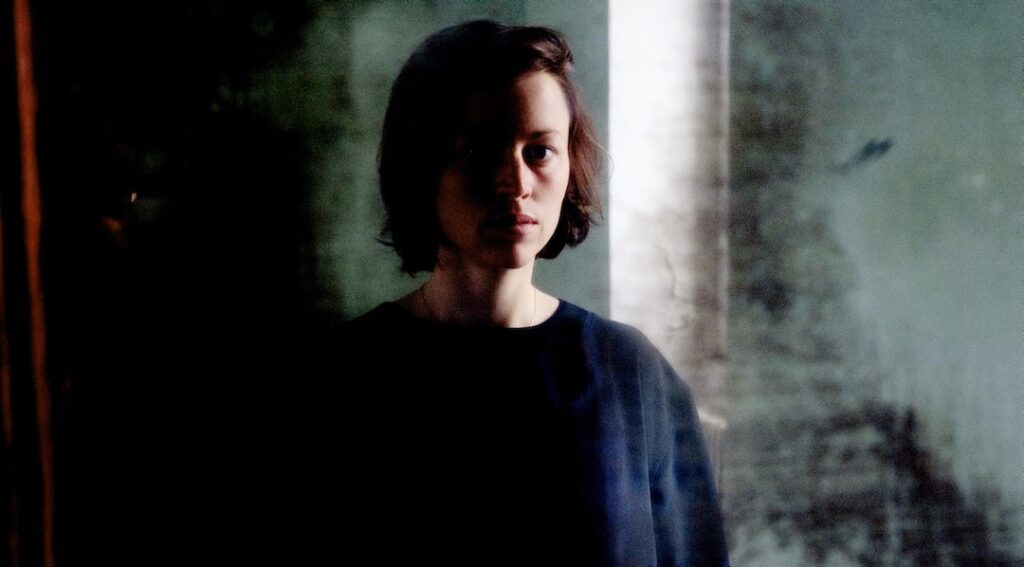

On her debut album as Quinquis, Èmilie Tiersen, who previously recorded under the artist name Tiny Feet, chose to sing in Breton, the historic, and endangered, language of Brittany. Seim, out on May 20 via Mute, is a Breton word that means sap.
“It’s way closer to Welsh than to French,” says Tiersen of Breton, which is part of the Celtic language family. Although Tiersen herself was raised in Brittany, she didn’t speak the language while growing up. “My mother did, but she was forced to speak in French when she was at school,” she says.
Tiersen’s grandmother also spoke Breton and inspired the singer to learn the language. “My grandmother had Alzheimer’s,” she explains. “She had forgotten, step by step, everything that she had learned, so she forgot French. She started speaking only in Breton because it was her mother tongue.”
Once this happened, there was a language barrier between grandmother and granddaughter. “I was really close to her and I just couldn’t communicate with her,” recalls Tiersen, who was by her grandmother’s side when she passed in 2011. “I think at that moment I realized that I really needed to learn Breton language.” Tiersen dedicated several months to studying in an intensive language course. Now, she has passed that knowledge on to the next generation. “My little boy is a Breton native speaker,” she says.
When we connect by Zoom for this interview, Tiersen is in a studio not far from her home on Ushant Island. This is the space where she works on songs before heading to the recording studio that she and her husband, Yann Tiersen, built on the small island at the south end of the English Channel, off the coast of Brittany. Tiersen has lived on Ushant Island for close to a decade, but it’s only recently that she realized the impact it has had on her music.
In fact, Tiersen says, two years ago, she would have said that Ushant Island did not influence her musically. The COVID-19 pandemic, however, led to a revelation. “During those two years, I realized how deeply linked to here, to this rock, I was, and how the community could really nourish my work,” she says. “On my album, it’s really full of stories about people from the island and full of emotions that I have shared with people here, or not far from here, in western Brittany, where I’m from. I really feel that the sea and the torment of the weather tells me something every day.” Without realizing it, Tiersen says, this would all become a part of her work.
Amongst Ushant Island’s characteristic features is tumultuous winter weather, with weeks so windy that there is “no semblance of silence” in the area, something Tiersen says can be quite intense. “Nature is powerful here,” she says. “The connection between people and nature is super deep and the community here is a really nice community.”
Tiersen began work on Seim while on tour with her husband, shortly after their son’s birth. “I was following him on tour so that he could see our son,” she explains. She also brought her computer along for the trip and made a plan to work on one musical idea in every tour stop. While she worked on the initial ideas, Tiersen imagined a character telling stories in each of the cities she visited. The tracks developed from there, but would go through several iterations before reaching their final form. “Everything was done by computer. I destroyed everything,” she says of the initial drafts.
At the beginning of the pandemic, Tiersen went back and remade the songs using an electric guitar and acoustic instruments. “I brought all those ideas into the room, where I am at the moment, and I tried to reshape them and go further into these ideas,” she says. “I kept some. I left some.”
After that— “by the end of the first lockdown,” Tiersen notes— she began collaboration with Gareth Jones, the producer and engineer known for his work with artists like Depeche Mode, Erasure and Interpol, while he was in England and she was on Ushant Island. “We really did co-writing on every single track with him using my acoustic elements and trying to link them to his synthesizers,” Tiersen explains. “It was like a dialog between us.”
The end result is a sublime and cohesive collection of songs that feel as in tune with nature as they are with the recording studio.
Seim also includes collaborations with Ólavur Jákupsson (“Run”) and endurance cyclist Emily Chappell (“Netra Ken”), who lend their vocals in Faroese and Welsh, respectively. The incorporation of these two languages is significant, as both have been revitalized by modern-day speakers and language-learners. “I think that both Welsh people and Faroese people are a good inspiration for Breton speakers,” Tiersen says.
Writing lyrics in Breton was not without its challenges. “To find the musicality of the language took me a while,” Tiersen notes. Word choices, too, were difficult at times. “I didn’t just want to write basic lyrics, poor lyrics,” she says. “I wanted to try to use words that were beautiful and sometimes, maybe words that are not commonly used, just put them back somewhere.”
The challenge was worth the effort for a Breton speaker like herself to share the language. “Every single person will reach one person,” says Tiersen. That, she says, can help make interest in learning the language spread faster. In using Breton, Tiersen is also doing her part to help spark renewed interest in the language. “We all know teenagers that are able to speak English thanks to the English tracks that they’ve heard,” she says. “Here, the best way to have your kids learn English is to have them listen to rock music.”
Follow Quinquis on Instagram and Facebook for ongoing updates.

